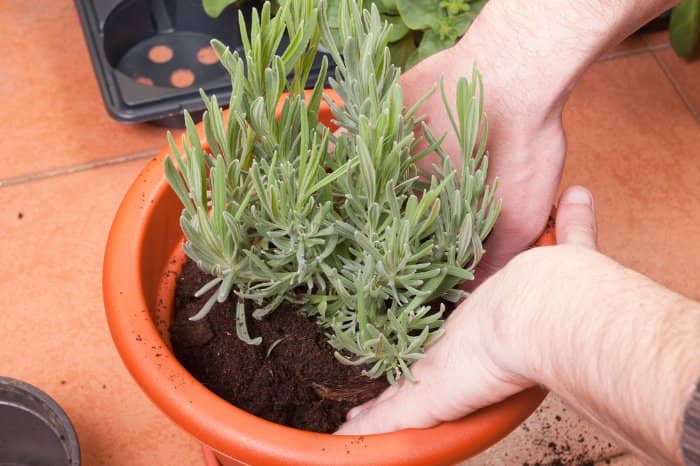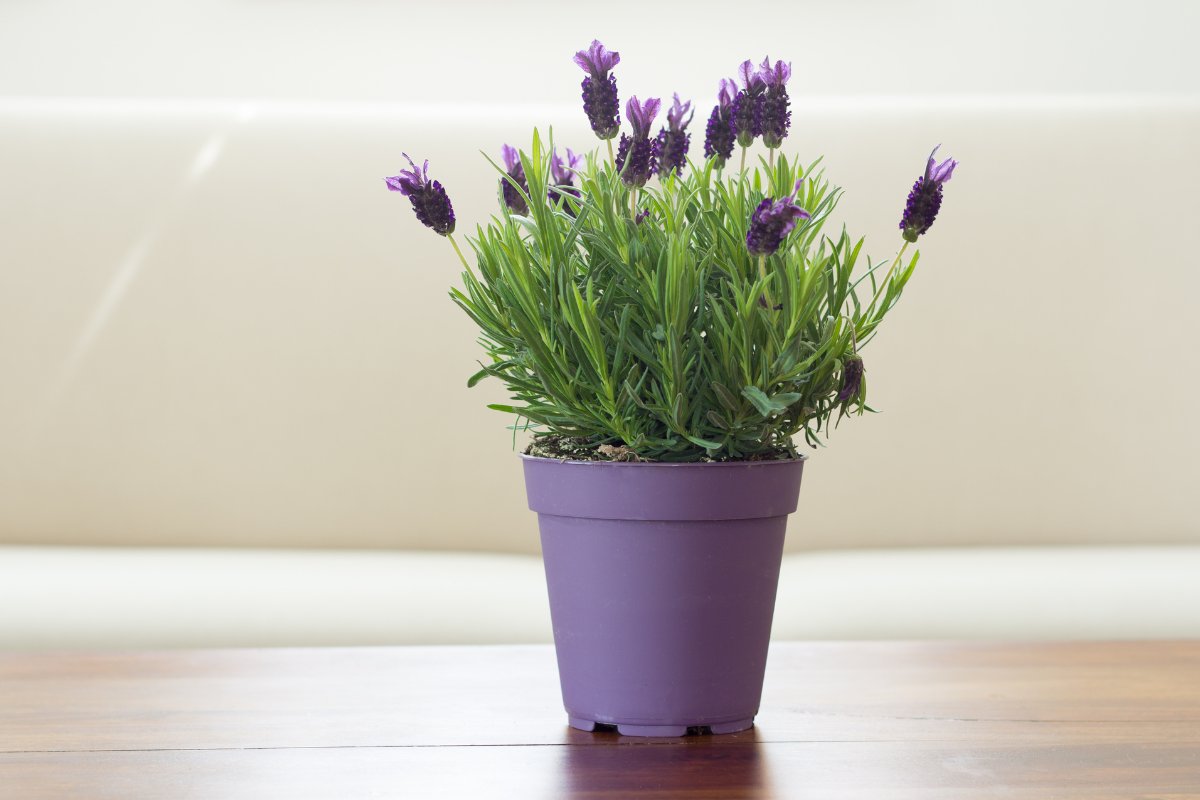What is the best soil for lavender in pots? Lavender, or what we often call lavender is a plant that does not like to be spoiled. Let’s have a look at how we can make this plant thrive!!
What Is Lavender?
Lavender generally refers to Lavandula angustifolia – this is the most commonly cultivated species of lavender. There are however a number of closely related species that look pretty similar. Some are used as culinary herbs. The plant grows well in Mediterranean conditions – dry summers, moist winters, poor slightly alkaline soil, and lots of sunlight. This has not however stopped the plant from being grown in soils very different from this as humans have moved it around the world.
Lavender produces terpenes and other phytochemicals that can be extracted to produce lavender oil. This is a popular fragrance used in many different products from perfumes to soap to essential oil bath bombs that relax you.
Lavender tends to grow in soils that are slightly alkaline, relatively poor, and relatively nutrient deficient as is typical of Mediterranean plants adapted to these conditions.
The Best Soil For Lavender In Pots
I used to make a terrible mistake with lavender – we tend to think that all plants thrive in loam. Lavender, and many other Mediterranean herbs, do not enjoy good soil at all! In fact, these plants will not succeed in loam soil, and I found the better and better I cared for my lavender the more miserable and covered in black smut fungus and disease it became until I killed it with care.
How To Make The Best Potting Soil For Lavender
To craft a proper lavender soil, we need to create soil that is very well-drained, rich in calcium to make it alkaline (above neutral pH of 7.5-8 works in my area), and a decent amount of sand and pearlite to ensure it is well drained. The trick is not to add too much compost at all! This basically needs to be relatively poor soil in fact.
My Lavender Soil Mix
My most successful lavender soil consisted of 5 parts fine river sand with gravel in it, 1 part old mature compost, 2 parts pearlite, 1 part crushed shell grit (a slow-release pH agent that keeps the pH up), and 1 part that is a mix of half dolomite and half milled pine bark.
This creates a grey, sandy well-drained soil that has some nutrients in it, but is not nutrient-rich. The lavender grows superbly on this.
Alternative Lavender Soil Mix – The Best Soil For Lavender In Pots
If you are in a hurry, and making my mix listed above is too time-consuming, you can also purchase premixed soil mixes that are relatively well-drained and not exceptionally nutrient-rich. A cactus soil such as this one will work well and then you can amend it by adding some shell grit. You can then plant your lavender. Keep egg shells and crush these and sprinkle them on the surface of your potting soil. Eggshells really help keep the pH high and lavender thrives on soil with eggshells added.
Manna Pro Crushed Oyster Shell | Egg-Laying Chickens | 5 LB
How To Prepare Soil For Lavender
If you have chosen either of the above soils for your lavender, remember to now prepare this mix by making sure it is completely mixed. I normally do this by placing the soil mix on a concrete floor (my driveway) and then I mix it thoroughly with a shovel, taking soil from the bottom of the heap and moving it to the top and doing this over and over until the soil has an even well-mixed texture. You do not want soil that has pockets of ingredients that are poorly mixed. This gives the plant inconsistent soil and slows it down.
A Note On The Best Pots For Lavender
There are a number of pot options you can choose for growing your lavender. I have played around with these over the years and have found that the following one worked the best.
If you are going to buy a pot for your lavender, it is important to buy a well-drained pot with a wicking system. A pot such as this is ideal. Some types of pots have a saucer at the base, and water runs through and then the pot sits in this water, and the water wicks back up to the soil. With time certain plants will dangle their roots down into the water. I have found that in some cases this can cause problems with lavender.
The wicking pot I showed, had two wicks that dangle into the water reservoir. The actual soil is not directly in contact with the bottom of the pot, and this means that the wick will slowly move a very small amount of water into the potting soil. Lavender thrives in these pots. The reason for this is that the pot actually provides excellent root aeration, and allows water to drain through the soil and then wick back to the plant at a very low rate. The plant is thus provided with excellent drainage, well-aerated soil, and just enough water for it to thrive.
The reservoir also provides a store of water which allows your lavender to survive for periods when you may be away and unable to water the plant. The wick pulls the lavender roots deep into the soil as well, and this is beneficial as it means that the plant has roots throughout the pot. After a few months, this means that with gentle water your plants become very tough. I try to give my plants the equivalent of an inch of “rain” every two weeks. This equates to a rainfall of about 26 inches, which is pretty average for a Mediterranean climate. If you provide much more than this, your plants can die from overwatering.

Conclusion – The Best Soil For Lavender In Pots
I hope this article has helped you understand how to mix the best soil for lavender in pots. Lavender does not like to be spoiled – give it miserable soil, and it will reward you with beauty! Give it lovely rich soil and it will get covered in black smut, and pests, and will probably die! I have learned this the hard way! Select a very well-drained pot with wicks and your lavender will be even happier.
The addition of eggshells on the surface of the soil is very important! This gives you something useful to do with egg shells, and it helps to keep the soil pH high, allowing the lavender to thrive for many years and maintaining the soil as the best soil for lavender in pots!


